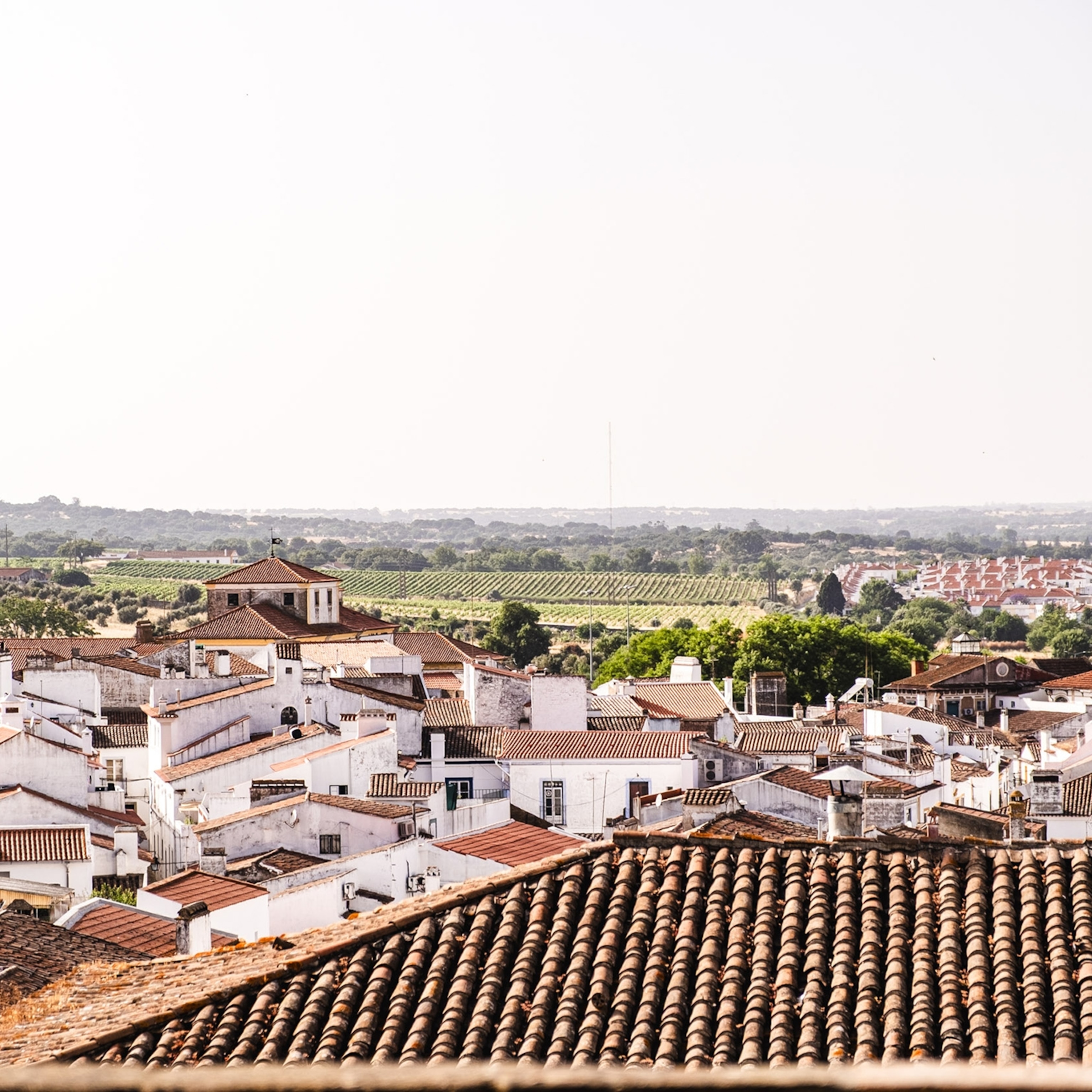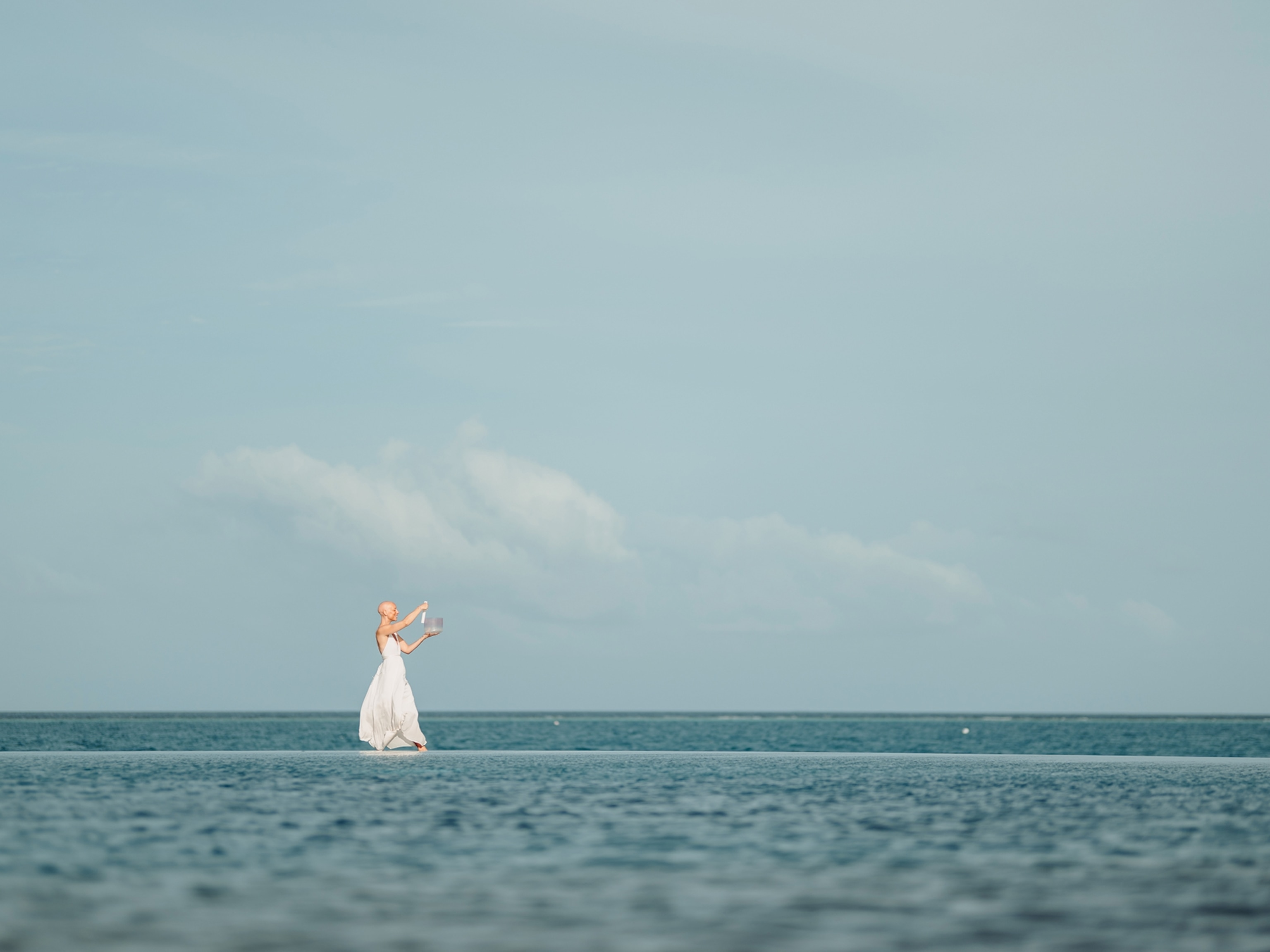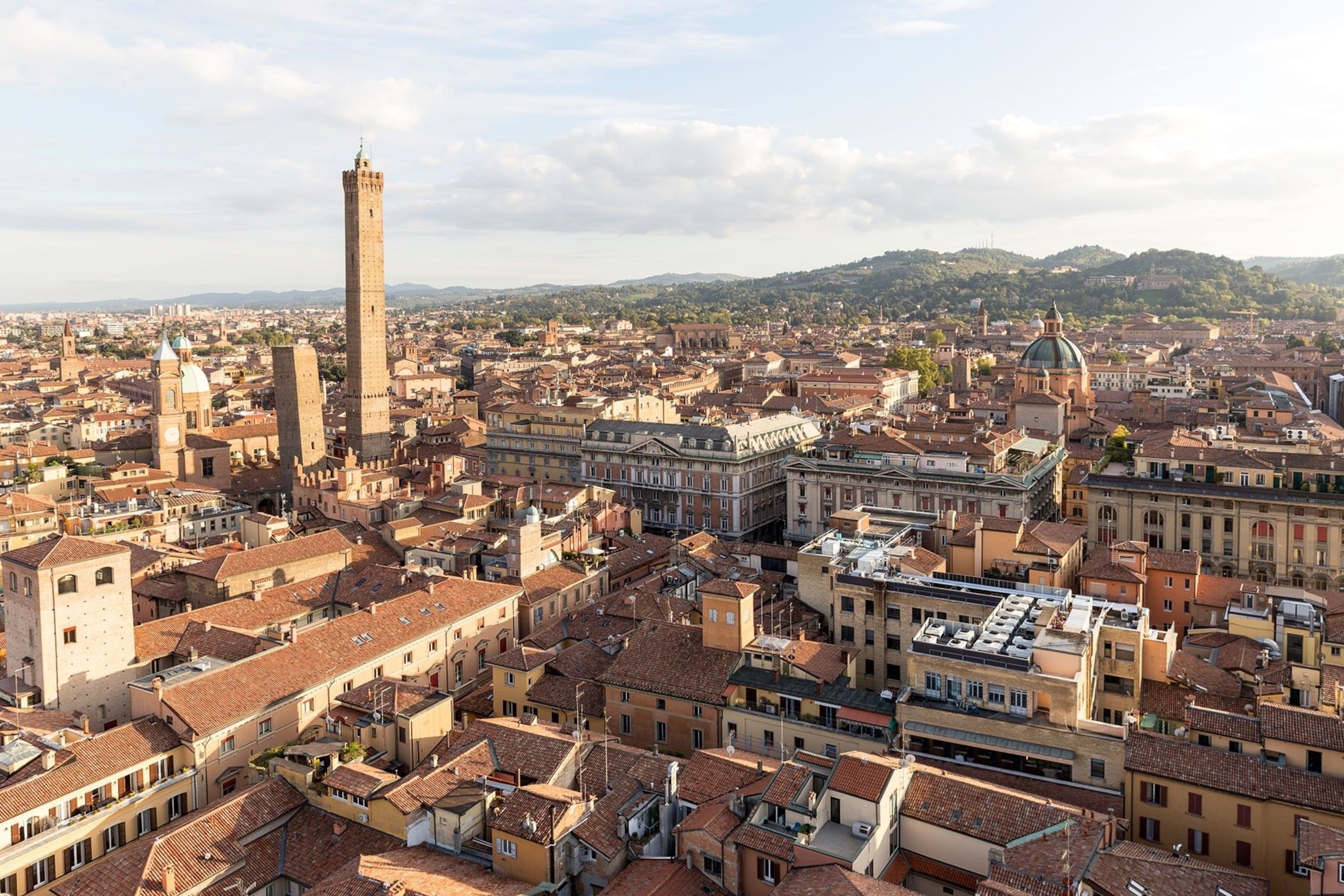
A culinary guide to the Italian city of Bologna, from lasagne to Lambrusco
This is the cradle of Italy’s world-famous cuisine — an erudite, antique city of twisted streets, forgotten chapels filled with frescoes and imposing temples to scholarship.
La Dotta. La Grassa. La Rossa. The learned. The fat. The red. Stereotypes they may be, but Bologna’s nicknames are on the money. To this day, it’s Italy’s left-wing bastion, held firm by Europe’s oldest university. And it’s not only Italy’s food capital; Bologna is the world capital of what we call Italian food. This is a place where plates arrive heaving with pasta hand-rolled that morning, drowned in parmesan; where tagliatelle is fried and dusted with sugar for a wintry treat; where ham hocks dangle from shop ceilings, wheels of cheese are stacked by the till and frothy Lambrusco is quaffed by the litre as a palate-cleanser for all that grease. Tortellini, lasagne, tortelloni, ragu — Bologna is the epicentre of them all.
While they’re widely used today, those nicknames are longstanding because within the ancient city walls, Bologna’s present is also its past. The centre is a web of medieval streets, knitted together by 25 miles of porticoes (some frescoed, others mosaic-floored, all a respite from the humidity). Look up, and you’ll see medieval beams propping up buildings and looming brick towers — the skyscrapers that made this a medieval Manhattan. Look inwards, and nondescript wooden doors will reveal themselves as the entrances to a florid church, a museum or a frescoed cafe. Go beneath the surface and you’ll find Roman streets, early Christian crypts, even medieval bell towers swaddled by their later replacements.
Bologna’s simplicity is its beauty, putting the focus on what the Bolognese do best: living. Even the history is alive: food-sellers hawk their wares in the tangled medieval market, artisans beaver away in the former Jewish quarter, and the art stays in quiet situ, instead of being floodlit in a museum.
In fact, Bologna’s best museum is its open-air one: Piazza Maggiore, where a brace of castles (now council buildings) square off against the basilica of San Petronio, a church so enormous that the locals gave up on the marble cladding halfway through. Today, the Bolognese parade beneath the porticoes and students snog on the basilica steps, while an immense bronze Neptune fountain acts as ringmaster to it all.

See & do
Bentivoglio Chapel: On Saturday mornings, volunteers open this 15th-century, spectacularly frescoed chapel in the Basilica of San Giacomo Maggiore. The fresco, The Triumph of Death, has a scythe-wielding skeleton leaping from a tomb to join its oxen-riding mates, while on the other wall is a photo-like portrait of local dignitaries, the Bentivoglio family. This is also the time to see Cimabue’s huge Virgin and tufty-haired child at Santa Maria dei Servi, a few streets over.
Museo Civico Archeologico: Bologna’s archaeological museum reopened in December 2019 with an exhibition on the Etruscans (the pre-Roman Italians). Highlights include a leg-shaped perfume flask, elaborate gold and amber jewellery, and an urn featuring a human squaring off with mythical beasts en route to the afterlife. It’s open until 24 May.
Cathedral: Get to grips with Bologna’s famous towers by climbing the cathedral bell tower, open on Saturday afternoons. You get two for the price of one here — a 13th-century square tower built around an earlier round one, with a ramp between the two whisking you 230ft to the top. You’ve also got a perfect view of the tower-pricked skyline, Piazza Maggiore and Bologna’s signature twin medieval towers, leaning tipsily. After coming back down to earth, nip into the crypt to check out the early-Christian and Roman remains, including a brick with a Roman dog’s paw print.
Underground: Underneath the glass-floored Salaborsa (the former stock exchange, now a library) in Piazza Maggiore are remains from the ancient city of Bononia, with walkways cantilevered above the 2,000-year-old streets. A Sunday afternoon crypt tour with Succede solo a Bologna offers access to four normally closed crypts, from the frail arches of the fourth-century San Zama to San Agricola and Vitale, where the city’s patron saints are said to have been martyred.
Quadrilatero: Get stuck into the city’s mythical food scene in this tangle of alleys east of Piazza Maggiore. Dating back to medieval times, the area has been home to delis, greengrocers and bars. Top picks are Simoni for ham and cheese and Atti for rice pudding. salumeriasimoni.it paoloatti.com
Basilica di San Domenico: Visit the pretty cloister and choir seats, deliciously carved with scenes of everyday Renaissance life; linger at the marble sarcophagus of St Dominic, sculpted by Nicola Pisano, with delicate saints around the top by Niccolò dell’Arca and a young Michelangelo.
San Michele in Bosco: In the hills behind San Domenico, this is a monastery-turned-hospital with jaw-dropping views over the city. The door to the right of the church altar whisks you into an otherworldly Renaissance corridor with a periscope-effect view of the 318ft Asinelli Tower; down the staircase are peaceful cloisters, including an octagonal one frescoed by the Carracci brothers.
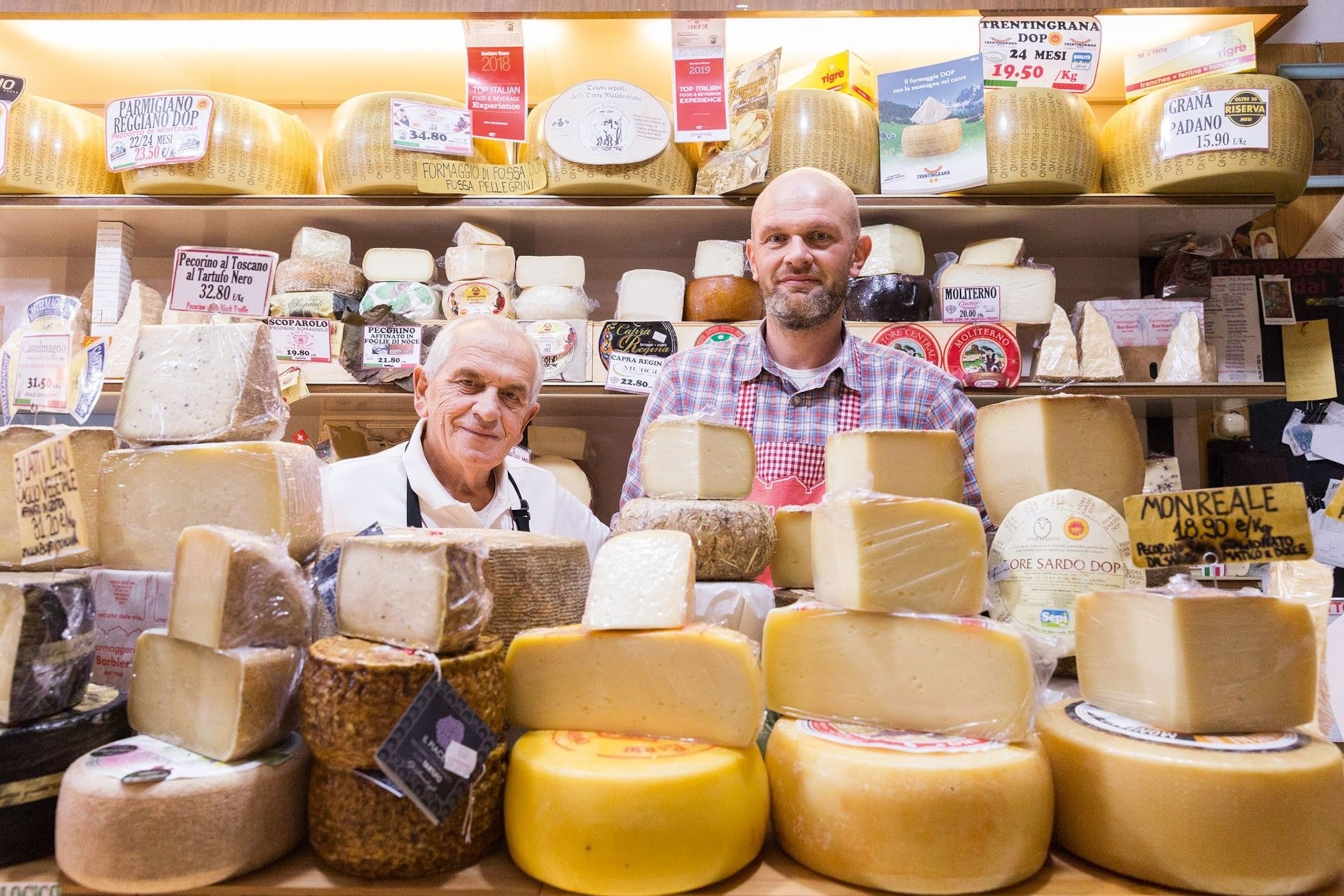
Buy
Via dell’Inferno: Old-school artisans have settled in this cobbled street in the former Jewish quarter. Cosetta Corticelli and her father hand-make classic women’s shoes while opposite, leather-worker Yanjia Chen crafts delicate earrings, bags and luggage tags from Italian leather at I XII Bo.
Altromercato: Stuffed with all things Fairtrade, from mafia-free Sicilian rice to cooperative-grown pulses, Bolivian alpaca scarves to headbands made from saris. Ceramics, jewellery, stationery and chocolate — it’s all here.
La Salumeria di Bruno e Franco: This is a one-stop shop for Bologna’s best food: a counter of fresh pasta, hand-rolled that morning by Franco’s daughter, plus the region’s best prosciutto, salami, oils and condiments.
Formaggeria Barbieri: The Barbieri family have been selling cheese in the Mercato delle Erbe food market since 1968. Alberto lets you sample over 100 cheeses, including Tuscany’s best pecorino and parmesan aged for 52 months.
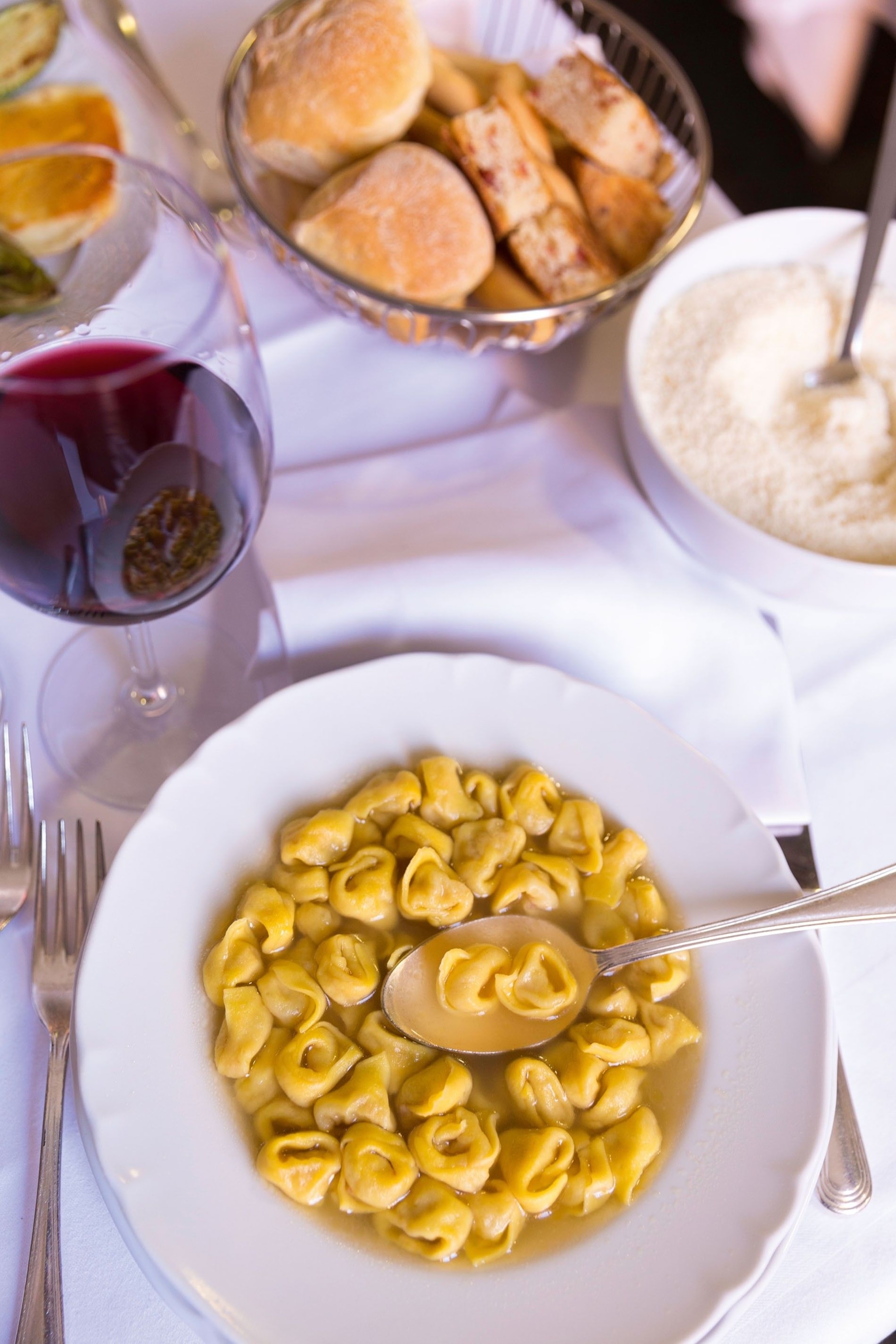
Like a local
Order the unusual: Forget tagliatelle al ragu. The two must-try dishes here are tortellini in brodo — tiny, hand-twisted pasta filled with parmesan and various pork meats, swimming in broth — and cotoletta alla petroniana, a breaded veal schnitzel wrapped in prosciutto and soused in melted parmesan. A tip: in Bologna, it’s necessary to book the best restaurants a week ahead.
Hidden masterpieces: In the Quadrilatero, pop into Santa Maria della Vita to see the harrowing, breathtakingly modern Compianto — lifesize terracotta sculptures of the Deposition by 15th-century Niccolò dell’Arca. Another striking work is in Santa Maria della Pietà: the Miracle of the Loaves and Fishes by 16th-century female painter Lavinia Fontana.
Back to school: For a taste of Europe’s oldest university (founded in 1088), follow the students to the Archiginnasio and pop into the all-wood Anatomical Theatre where two flayed-skin statues hold up the lecturer’s chair. If that’s not gruesome enough, the Palazzo Poggi Museum has wax casts of embryos and adults mid-dissection.
Sleep
Una Hotel: Right opposite the train station, about a 20-minute walk from the centre, this trendy hotel has brightly coloured, travel-themed rooms and a pretty outdoor terrace that’s open April to October. Doubles from £69, B&B.
Art Hotel Commercianti: You’ll find everything from a display case of Renaissance pottery to medieval beams in the 38 rooms of this 12th-century building, a former guild premises round the side of the Basilica of San Petronio. Get a room overlooking the basilica — the chants on a Sunday morning float up through the window. Doubles from £130, B&B.
Grand Hotel Majestic Gia Baglioni: Bologna’s fanciest hotel has Luca Giordano artworks on the walls, a strip of Roman road by the breakfast room and a lobby of gleaming marble. The flouncy, fabric-smothered rooms are over the top and not five-star-sized, but it’s worth it for the outré experience. Ask for a room high up overlooking the cathedral. Doubles from £266, room only.
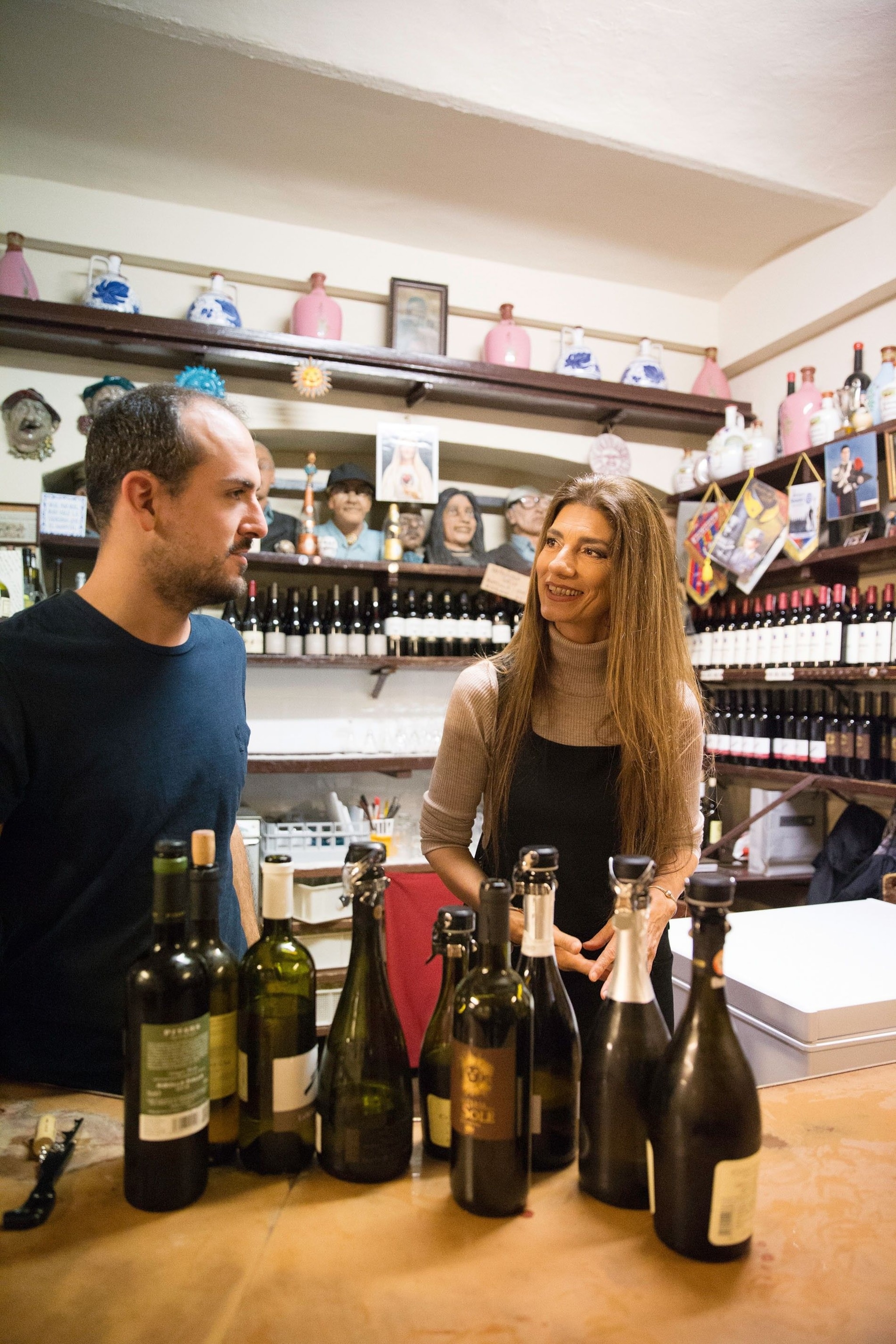
Eat
Sfoglia Rina: A pasta shop with a restaurant in the back, this serves local pasta dishes with swift service at decent prices, plus daily specials. Perfect for lunch, it’s also good for seasonal specialities, like pumpkin tortelloni.
Al Cappello Rosso: It may look modern, but this casual bistro has been operating since 1375. It’s tiny, with just six tables, but the pasta, made in the glass-fronted laboratory up the street, is superb. Try the lasagne on Sundays.
Oltre: Most restaurants in Bologna are traditional. Not so this hipster haven, which takes the classics in a completely new direction. Try the ramen-style tagliolini in parmesan-filled broth or go for the innovative five-course tasting menu. The entrance is unmarked — look for the glass panels covered in stickers.
After hours
Gamberini: By day at pasticceria (pastry shop), Gamberini serves up the best aperitivo in town, along with a groaning buffet of superb finger food that’s all yours if you only order a drink. Squeeze around the wooden counter or, if the weather is good, take a table under the porticoes.
Le Stanze: Location is everything in this 16th-century chapel once belonging to the Bentivoglio family. The walls are still frescoed with black-and-white mythical scenes, and the odd bust watches you from the niches surrounding the bar.
Osteria del Sole: Take your Quadrilatero-bought picnic to Osteria del Sole, an unpretentious bring-your-own-food bar in the middle of the action. Pair your food with a fizzy local Lambrusco, pull up a pew on the communal tables and watch the old gents playing cards in the corner.
Essentials
Getting there & around
British Airways flies direct from Heathrow, EasyJet from Gatwick and Ryanair from Edinburgh, Luton, Stansted and Manchester.
Average flight time: 2h5m.
The city centre is walkable — in fact, due to the one-way system in the centre, walking is usually the best way to get around. The bus system is decent, although you’ll only really need to use it to get between the city centre and the train station. The airport is just five miles out of town: taxis cost around £20, there are regular buses, and a new monorail is due to open in 2020, connecting the airport to the train station in seven minutes.
When to go
Bologna has high humidity levels, so winters can be bitingly cold and summers suffocating. However, the porticoes protect you from the rain or snow, so mid-summer is really the only time to avoid when temperatures average 30C. Spring and autumn are usually mild, averaging around 18C. Winter is the best time to eat the food, too — the rich dishes are designed to warm you up when it’s around 10C.
More info
The Bradt Guide to Emilia Romagna. RRP: £16.99
How to do it
British Airways Holidays offers return flights and two nights at the Art Hotel Commercianti, B&B, from £220.
Published in the April 2020 issue of National Geographic Traveller (UK)
Follow us on social media
Twitter | Facebook | Instagram

